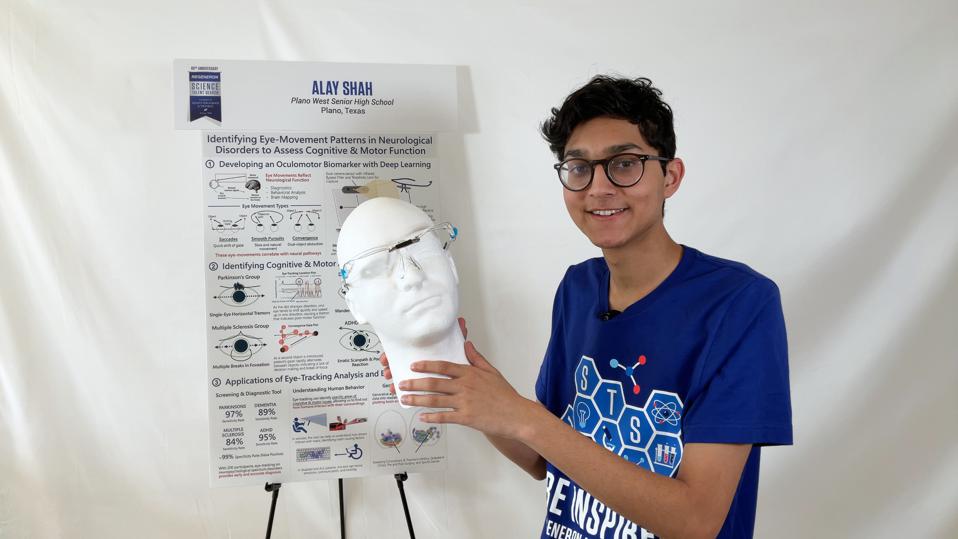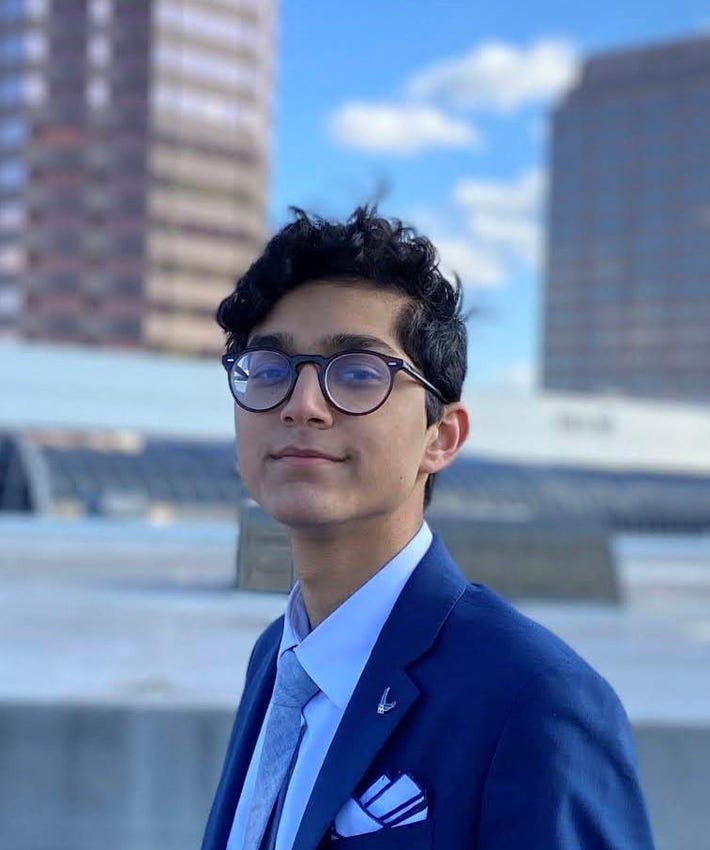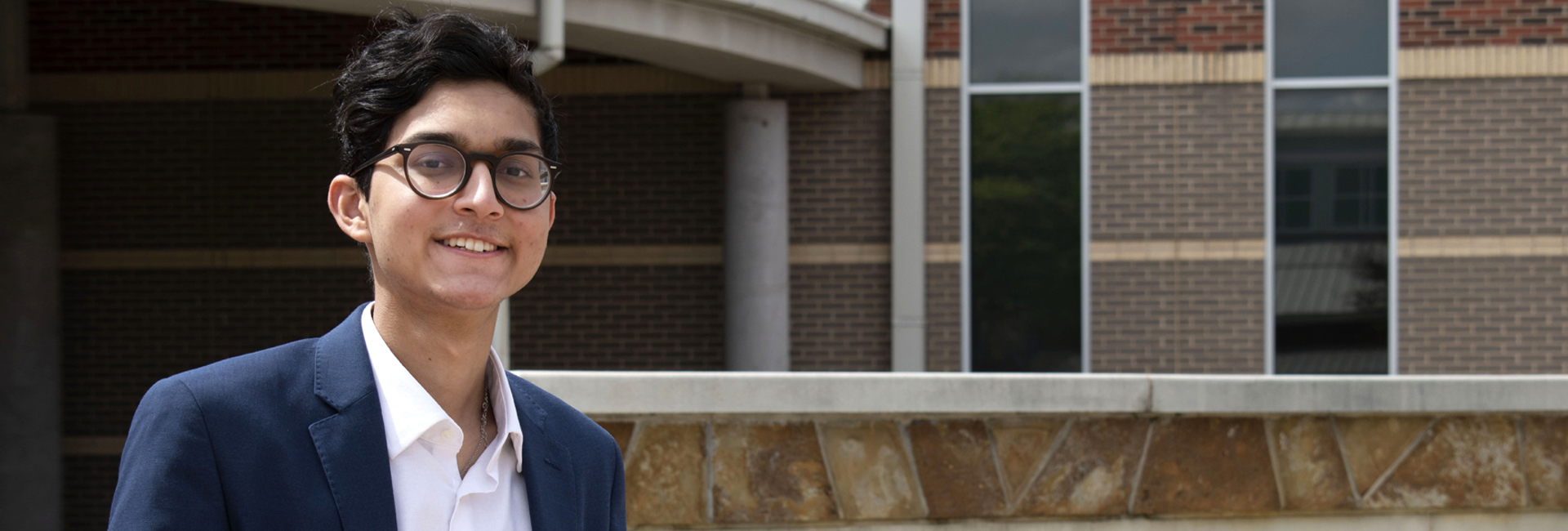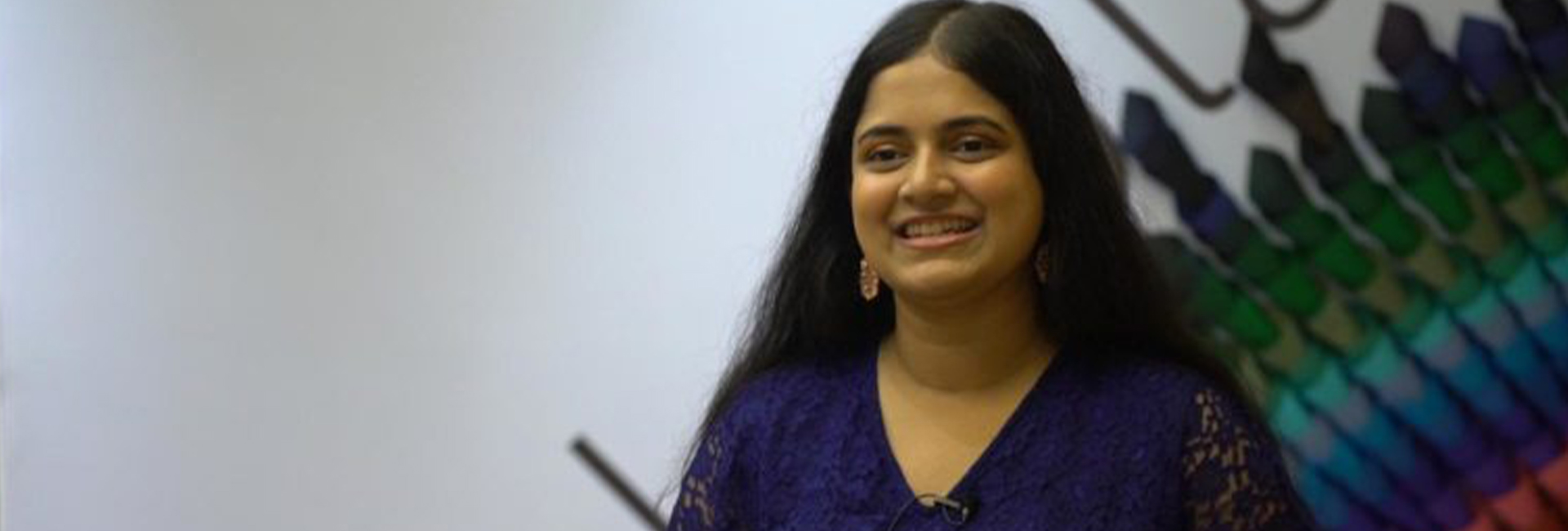(October 26, 2022) Failures are nothing but stepping stones to success, and Indian American Alay Shah couldn’t agree more. The 18-year-old, who made it to the top ten at the 2021 Regeneron Science Talent Search for designing an eye-tracking algorithm that can detect neurological diseases, had to face criticism, especially at the beginning of the journey. But not one to be deterred, the teen remained unfazed and focused on his research which led him to make an impact by developing a diagnostic tool. “I decided to stick with it because it was something I believed in. A lot of times, you’re met with failure, but that one success can completely change everything,” Shah told Forbes.
The success came in for this Texas resident after years of perseverance, however, it was worth every bit of it, for he developed a tool to test eye movement as a low-cost, non-invasive method to quantifying deep brain function. In the intervening years, he not only wrote the software but also built the hardware and conducted clinical testing on Dementia, Parkinson’s, Multiple Sclerosis, and ADHD patients. “Besides allowing us to perceive our surroundings, eye movements also act as a window into our mind and a rich source of information about the brain’s functions and health. This combined assessment of neurological and psychological health is known as a neuropsychological evaluation, and it proves exceedingly valuable for diagnosing cognitive issues,” he said in a statement.

Alay Shah is an Indian-American inventor.
Inspiration in surprising places
The inspiration came while watching a football match. In ninth grade, Shah noticed that after a player took a hard hit on the field, the medical professional did a quick eye test on the sidelines, to check for a possible concussion. It struck him that if doctors could make a preliminary diagnosis in a noisy and stressful situation like a football match, a similar eye test could also be used to diagnose other mild traumatic brain injuries. That’s when he decided to build a portable and inexpensive tracking device that could detect neurological abnormalities.
However, there was a big problem – Shah had no idea how to build it. First, he enrolled in online programs at MIT’s OpenCourse Ware to get a grip on the principles of computer science and artificial intelligence. This led him on a four-year research journey – a collective of independent study, input from teachers and professionals, and testing on neurological patients. “By just jumping into something as difficult as an eye tracker was, and kind of scrapping it together, by the time it was finished, I learned a lot,” the teen added.
Designing the prototype
After years of upgrading his skill sets, he built a headset, which according to Forbes, points two cameras directly into the eyes and a sensor that captures an image of the entire face. It needed a set of algorithms to process the data, something he later developed. “I took a look at the current eye tracking standard and I used a combination of a set of intelligent algorithms to redefine eye tracking at its core,” explained the teenager.


Alay Shah was among the top ten at the 2021 Regeneron Science Talent Search.
While one algorithm helps track the eye’s position more accurately than many existing systems, the second called gaze estimation generates a set of points that estimate where the person is looking. It helps identify patterns and allows for categorisation of different types of movement. “This is how I know Parkinson’s patients have tremors, or ADHD patients may have trouble tracking dots that are moving in a line,” the teen said.
Put to the test
While the device was ready, his next hurdle came in the form of testing on real people. Not the one down to challenges, he began cold calling and developed a pitch deck to pitch his ideas to private neurological practices convincing them to test his easy-to-use diagnostic eye-tracking tool. It took persistence, but he was eventually successful in testing the tool on nearly 200 patients with dementia, Parkinson’s, and other disorders.
The tool helped him bag a position in the top 10 at the 2021 Regeneron Science Talent Search. The teenager believes his “communication skills” is the key to his success. Along with the technical and low-cost projects, he understands the power of soft skills.
Shah is also the founding member of the Association for Young Science and Innovators – a student-led nonprofit created to help young scientists pursue success with support from more experienced student scientists. He also mentors fellow student scientists with their research projects and helps them increase their ability to communicate effectively about their research during judging interviews. Along with this, he is also the founder of the Get Back to Work Initiative which helps fundraise to assist families in India whose primary breadwinner, due to illness or accident, needs new vocational or medical equipment, such as wheelchairs.
Shah, who is making an impact, has a piece of advice for youngsters. “Don’t listen to people who say it can’t be done. If you believe it’s there, then something is there. Don’t let others’ preconceived notions limit innovation. Science is always moving and one success, big or small, can change everything.”
- Follow Alay Shah on Linkedin



